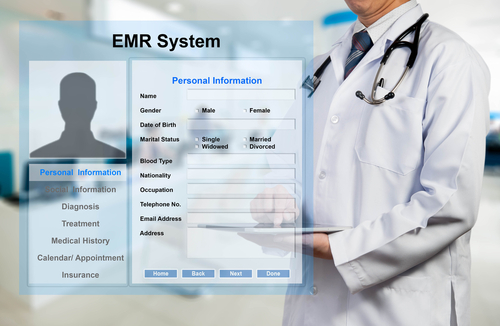Electronic Medical Records:What Doctors Need to Know
M3 India newsdesk May 15, 2017
“Digitization” is the current buzzword and healthcare system cannot be far behind. Electronic medical record (EMR), as well as electronic health record(EHR), is increasingly being implemented in many developing countries.

Despite its immense potential, the healthcare industry seems to lack the enthusiasm to implement and use electronic record system effectively in work environment. It is the need of the hour because it positively impacts the quality of health care and is also cost-effective.
Some of the corporate hospitals in India are already using electronic recording systems to record patient treatment, diagnosis, laboratory test, imaging, history, prescription, and allergies. It also includes registration and billing. While the electronic recording system in doctor’s office promises a host of benefits, the usage seems to be riddled with pitfalls if not used appropriately. Having said that, it would be in your best interest to understand this changing point of care process for effective patient care and provider productivity.
The traditional paper-based medical record system seems to be inadequate to meet the demands of modern medicine. Essentially, EMR technology will only act as a channel for innovation and creativity within the healthcare institution, provided professional’s healthcare is equipped with the necessary technical and communication skills to work within a collaborative environment.
Here is a quick breakdown of benefits and pitfalls about electronic medical recording systems:
I. EMR can fit into any kind of practice, big or small. Workflows of EMR have no fixed criterion (standards), as different organizations have a different understanding of EMRs.Workflows of electronic recording systems have no fixed criterion. Since different organizations have different requirements, EMR technology can be designed to suit the requirements of each individual case. This means that many features of such a system can be configured as per the provider’s need.
II. EMR supports seamless care decisions and coordinated care. EMR unifies a patient's entire database, it helps describe in detail or provide a longitudinal record of a patient.The records hold details about chronic diseases, major and minor clinical conditions and patient history over the years. Medical history such as surgical history, medications, medical allergies, and medications can all be in one place.
III. EMR can really benefit your practice. Although there might be some initial glitches with implementing an EMR, electronic records can help improve efficiency, streamline processes, and eliminate human error. But the advantages of electronic record keeping go way beyond these.Few of the potential benefits are listed here:
- Population management and proactive patient reminders
- Rapid and remote access to patient information while on-call or at the hospital
- Integration of evidence-based clinical guidelines
- Fewer repetitive, tedious tasks
- Less "chart chasing"
- Improved intra-office communication
- Easier compliance with regulations
- Demonstrable high-quality care
- Saved space
To sum it, electronic health records can save time and in a case of emergency, these records can provide critical, life-saving information to care providers.
IV. Security and privacy issues with EMR. Though EMRs can be misused, hacked and maliciously used to invade privacy, reveal sensitive information, and threaten the security of patient and doctor alike, the solution to this is simple.Security measures such as firewalls, antivirus software, and intrusion detection software ca be used to protect data integrity. Implementation of specific policies and procedures can help maintain confidentiality. For instance, maintaining the confidentiality of employees, exclusive usage of ID by authorized person, timely logging off when leaving a terminal and use their own ID to access patient digital records. Routine random audits conducted on a regular basis can ensure compliance. All system activity can be tracked by audit trails. This includes detailed listings of content, duration, and the user; generating date and time for entries and logs of all modifications to EMRs.
Switching to electronic records system in the office would leave you with more time, more opportunity to stay connected to the office even when you are physically away and bring in changes to clinical practice. Besides gauging the financial and the technical readiness, system, it would be worthwhile to assess one’s practice’s clinical goals and needs, before making the transition to the electronic medical recording system.
-
Exclusive Write-ups & Webinars by KOLs
-
Daily Quiz by specialty
-
Paid Market Research Surveys
-
Case discussions, News & Journals' summaries